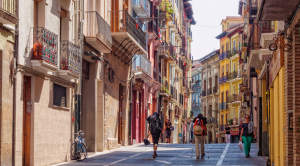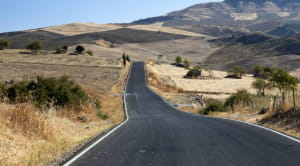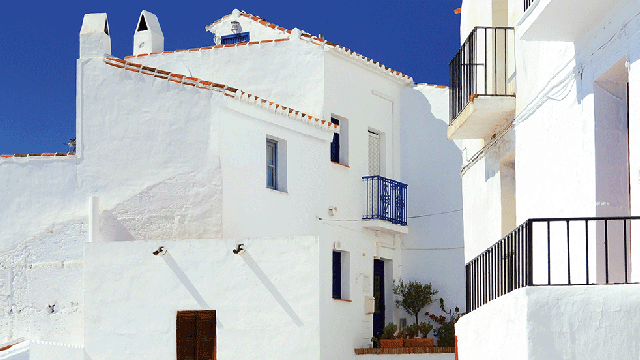
Escape the crowds in Andalusia’s whitewashed Pueblos Blancos villages through Sierra Nevada, Granada and Ronda
Dramatic vistas, crystal-clear waters and a landscape steeped in Moorish charm… Explore Spain’s sunshine coast.
If you're looking for holiday heaven, don't discount the Costa del Sol. The landscape is a verdant valley dotted with mango and avocado orchards, broken up by the occasional white sugar cube house, leading to a deep-blue ribbon of light on the horizon – the sparkling Mediterranean.
I thought back to what had brought me to this hitherto unknown paradise – an invitation, received two months earlier, saying ‘Please join me for my 50th birthday… In Torrox, Spain’. I love a good celebration almost as much as I love a good holiday, so I Googled this place I’d never heard of, and learned it was east of Málaga in Andalusia, on the Costa del Sol – but a world away from the resorts of Marbella, Torremolinos and Fuengirola. I booked my flight.
The easy 31-mile drive cut a swathe through a landscape filled with huge plastic greenhouses interspersed with the odd urbanisation – holiday housing estate – but Torrox itself turned out to be a treat. The laidback town’s warren of mosaic-inlaid alleyways and winding steps charmed me so much that I determined to discover more of the area, one that climbs from the coast to take in the historic whitewashed villages known as the Pueblos Blancos, spectacular hill-walking and hiking in the Alpujarras on the southern slopes of the Sierra Nevada, the Moorish splendours of Granada and the mountaintop eyrie of Ronda. A road trip was clearly in order – a circular route that would take me back to Málaga through the region’s impressively diverse and hidden attractions.
All white now: Frigiliana, Nerja and Maro
Tempting as it is to head straight for the sea, the obvious road trip from Torrox begins not by heading down to the coast, but up further into the hills, to one of the best examples of Andalusia’s Pueblos Blancos. These whitewashed villages are scattered throughout the region, and the best of them, like Frigiliana, are great examples of Moorish architecture and town planning at the everyday level, as well as more modern attractions.
A wander through the pastel-painted doors of the white houses lining the steep cobbled streets of Frigiliana’s old town, Morisco-Mudéjar, reveals a 16th-century sugar factory, the Renaissance church La Iglesia de San Antonio and El Torreón, the pretty courtyard site of an old granary. If you have the stamina, you can continue climbing as far as the remains of the Muslim castle on the hill above the town; the four-mile hike is a strenuous workout, with a fine pay-off in the form of spectacular views.
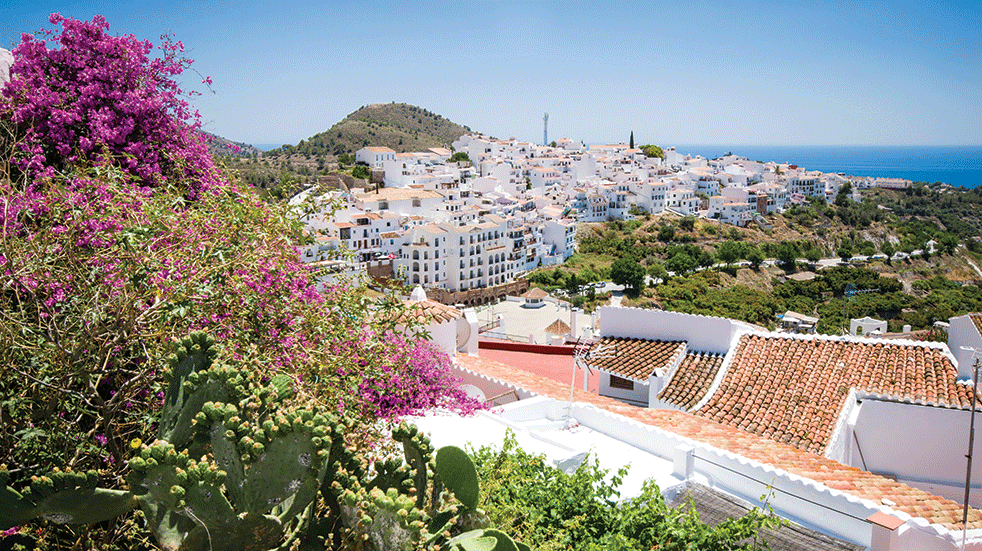
Spectacular, sun-drenched views from Frigiliana’s hillside terraces.
From here, it’s a straightforward sub-four-mile hop south to Nerja. This busy tourist resort manages to retain its charm despite the summer hoards drawn by the excellent restaurants and wonderful lookout points from a fine promenade, the Balcón de Europa. They’re tempting, but so too are the Cuevas de Nerja. These three miles of caverns include some spectacular caves and the world’s largest stalagmite (105ft), making for an enjoyable rainy-day attraction. Outside, walks up to a picnic area offer lovely views across the coast.
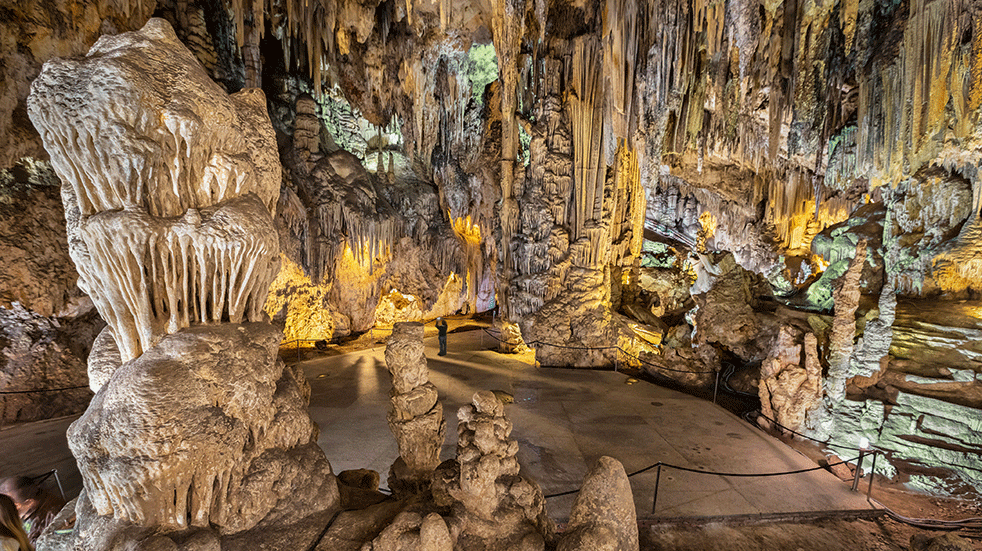
The many striking geological formations in Cuevas de Nerja include the world’s largest stalagmite.
That coast, as it ribbons along towards Almería, becomes ever more wild and vertiginous as the mountainous National Park of the Sierras de Tejeda, Almijara y Alhama dips down to the sea. Should the drive through this mesmerising landscape alongside the water induce the need for a swim, the obvious spot is La Cala de Maro, a superb cove with clear, calm water, a clean beach, good kayaking and a fantastic beach bar. From here, the coastal and mountain scenery just gets better and better.
With no sizeable towns on the 12-mile stretch of coast road between Nerja and La Herradura, the natural beauty of this region is allowed to take centre stage. On the left lie pretty coves and secluded sandy beaches – including what many cite as the Costa’s best naturist beach at Playa de Cantarrijan – and on the right, sparsely populated green hills and mountains that are a far cry from the traditional views of Spain’s sunshine coast.
The broad sweep of La Herradura’s fine beach comes into view well before the town does, marking, with its neighbouring town of Almuñécar, the border between the Costa del Sol and the Costa Tropical.

Traditional fruit and vegetable markets are still a Spanish way of life.
Set between the headlands of Punta de la Mona and Cerro Gordo, La Herradura is a total charmer, with beachfront bars, restaurants and diminutive hotels stretching for just over a mile along a wide, sandy beach. Here, families enjoy calm waters and amenities, watersports fans make the most of a wide range of activities from kayaking and paddling to snorkelling and scuba diving, and everyone makes the most of strolling along a promenade that offers welcome shade courtesy of regular oases of green grass and palm trees.
There’s little else to do in the town, but as a chill-out beach spot for a day or two, it’s one of the best. And should you get bored, a wonderful few hours can be spent in the nearby town of Salobreña, whose distinctive rock outcrop is visible for miles around.
With habitation here stretching back 6000 years, the white town is another of those that are a delight to just meander around, taking in the 10th-century Moorish castle, the odd Roman remains and a number of lovely little churches. From here, it’s so easy to get to the snowy peaks of the Sierra Nevada to the north that in early spring you could spend the morning skiing and the afternoon on the beach – but even if you don’t go that far, the foothills of those peaks are a must.
Read more of our expert travel advice
Walk the Camino Del Baztán in northern Spain
Discover Spain's best road trips
Holiday stress-free with our top travel tips
The long and winding roads: villages of the Alpujarras
Locally known as the Alpujarra, the 50 or so mountain villages and diminutive towns scattered through the southern flanks of the Sierra Nevada span everything from hamlets like Carataunas to Lanjarón, famous for its mineral baths, and more substantial spots like regional, cosmopolitan capital Órgiva. All are set amid stunning gorges and soaring peaks dropping to riverside valleys interspersed with placid reservoirs and glacial lakes.
Hair-raising switchback roads criss-cross the region, offering hundreds of hiking and walking opportunities; in autumn, you could gather chestnuts along gently gurgling streams or forage for wild berries and prickly pears; in winter, marvel at the majestic snow-topped peaks, their pinnacles often crowned with Cabra Hispanica mountain goats silhouetted against the sky like sentinels.
In spring, look out for the region’s birds – common sightings include the colourful hoopoe, bee-eater and goldfinch; and in summer, just enjoy the cool mountain air as you watch villagers in picturesque towns like Pampaneira, Bubión and Capileira dry tomatoes, peppers and other vegetables on their signature flat roofs.

Mirador de Puerto Rico’s monument to the Spanish mountain goat.
Driving and walking around the circuitous but well-maintained roads of the Alpujarras, time seems to stand still in the bright, crisp air. You could lose yourself for days here, but then you’d miss the splendours waiting nearby.
Just over an hour north of Órgiva, Granada is rightly famed for the Alhambra complex and Generalife gardens, designed by the Moors in the 13th century and widely amended over the following centuries by both Moors and Christians. Set majestically against the backdrop of the snowy Sierra Nevada range, it is as breathtaking as you would expect the most popular monument in Spain to be. Yes, you’ll be accompanied by thousands of other holidaymakers, yes it can be hot and hard work, but it’s also unforgettable – a genuinely world-class site.
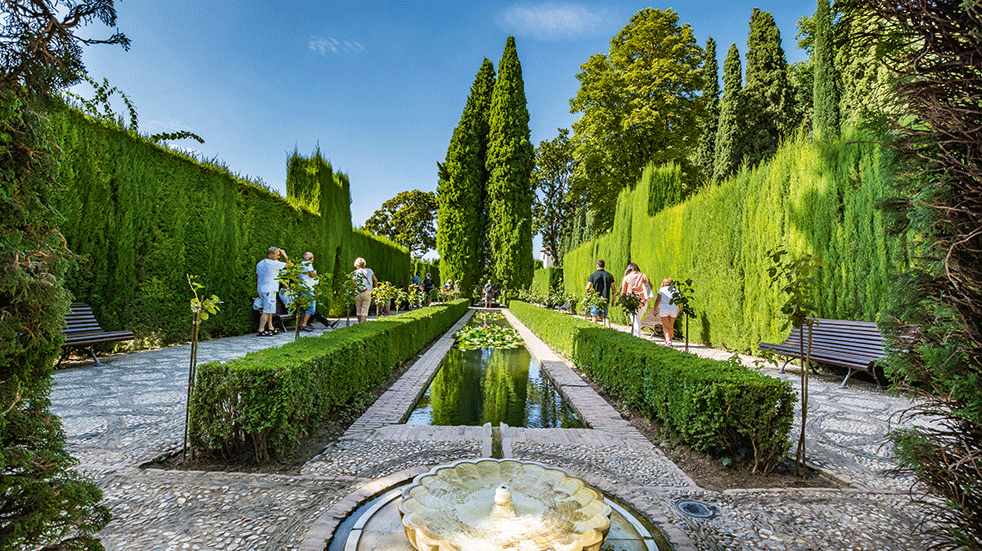
The Generalife gardens are a well-trodden site for good reason.
But to write Granada off as being all about the Alhambra would be to do this wonderfully rounded city a real injustice. In the winding hilltop Arab quarter of the Albaicín, unexpected viewpoints (miradores) pop out of the cobbled streets like mirages. The lovely 18th-century gypsy quarter of Sacromonte is filled with flamenco clubs and gaiety. And the more modern Centro district, with its buzzy bars filled with people enjoying free tapas, complete the appeal, creating a city that can’t help but charm all comers.
Take a walk along the Genil River, stopping to examine wares at the crafts market or gawp at the slightly surreal Fuente de las Granadas (pomegranate fountain), and you’ll almost certainly fall under its spell. But – hard to believe as this may be – there is a city that, for art lovers, is even more enjoyable than Granada.
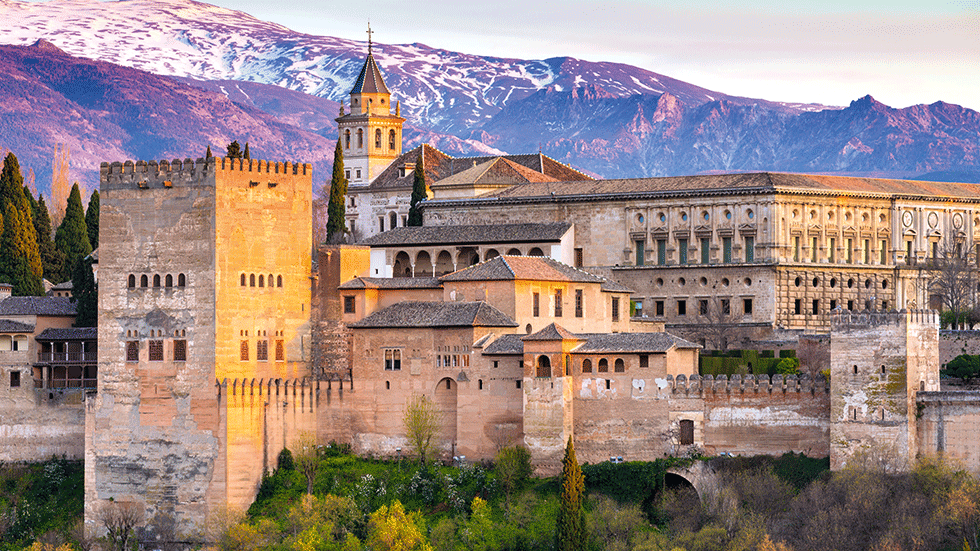
Shades of perfection – the Alhambra at dusk.
To Málaga… and beyond!
The gently unprepossessing capital of the Costa del Sol may have failed to capitalise on being the birthplace of the world’s best-known artist until 2003, but when the Picasso Museum opened its doors that year, it turned Málaga into a new weekend break destination. This in turn saw the opening of a whole slew of galleries that have, in the last decade, brought it to the attention of art lovers throughout Europe.
The Pompidou opened a beautiful outpost here in 2015, joining more than 20 existing institutions including the wonderful Carmen Thyssen Museum (classical), Centro de Arte Contemporáneo Málaga (challenging), Museo Jorge Rando (expressionist) and even a museum of glassware (quirky), creating a mixed bag of treasures that ensure a weekend filled with culture.
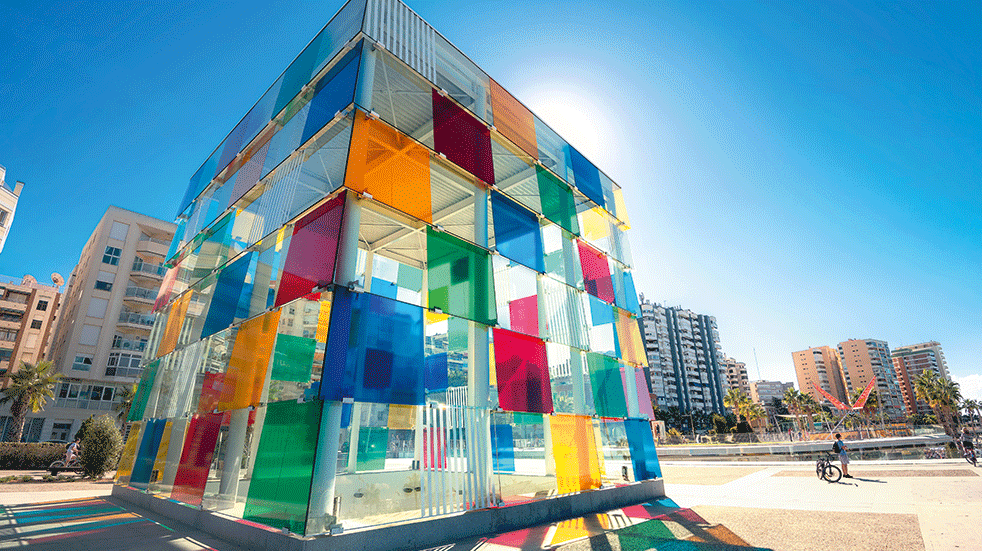
The Pompidou’s multi-coloured outpost.
And beyond art, the entire town is a real delight, both classically grand in its squares, broad avenues and imposing cathedral and warmly intimate in its little streets linking all these. Want to wander in nature? You can climb to the Alcazaba fortress and Gibralfaro castle. Without the climb? Promenade through the shady, pretty botanical gardens to the flashy new port area that’s home to the Pompidou. And in between it all, amazing seafood restaurants, tapas bars, sherry bars and beachfront restaurants offer countless opportunities for R&R.
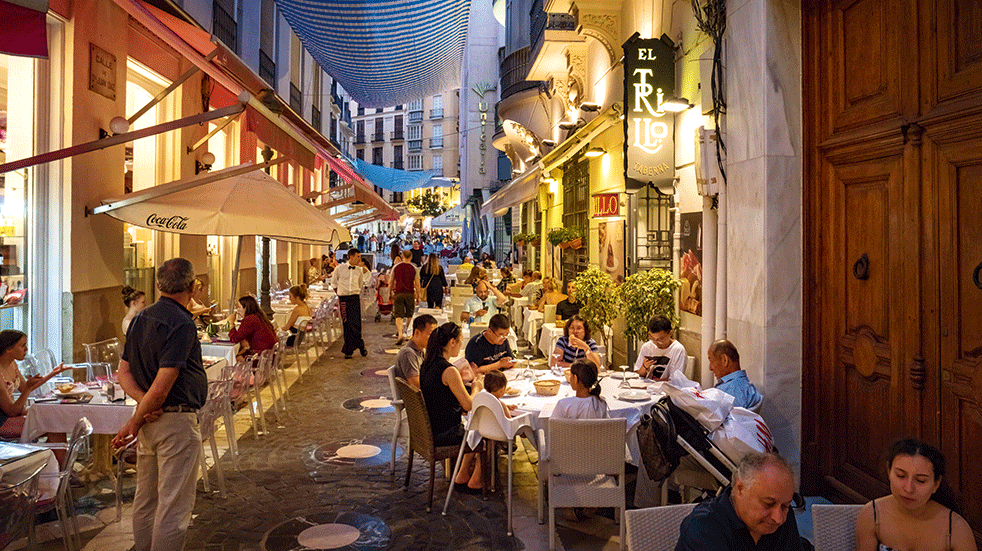
Sampling the tapas in Málaga.
Great accommodation also makes Málaga perfect for a base from which to explore not just the Costa del Sol’s eastern delights, but its western wonders, too. Beyond the pints of beer and English breakfasts lies the luminous Costa de la Luz, with its huge expanses of wild seas and empty beaches.
West of here lies the beautiful Ronda, where viaducts link gorges as deep as Croesus’s pockets in one of Spain’s most beautiful regions, and further north is the Andalusian capital Seville. All of it is within easy distance and, fortuitously, all of it is ripe for exploring at any time of the year.
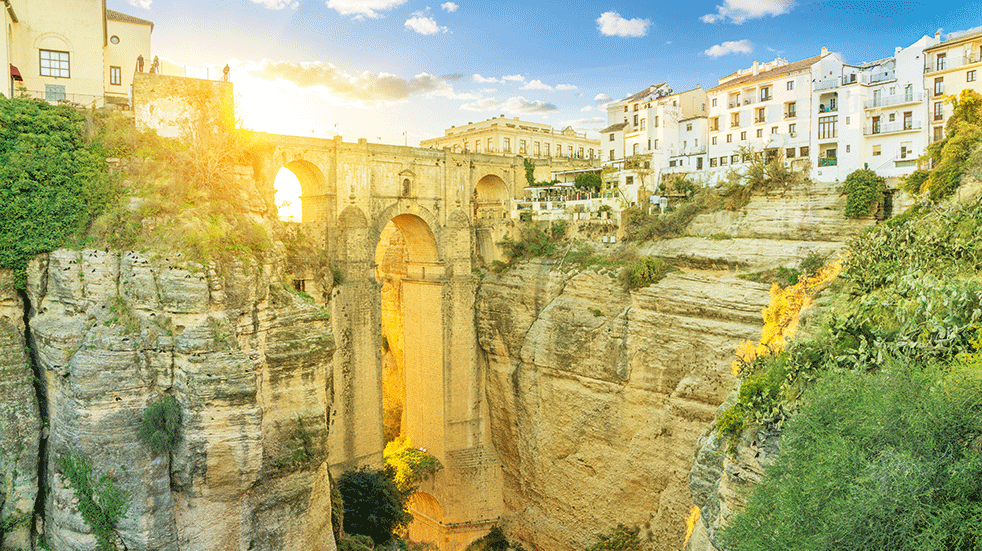
The Puente Nuevo Bridge, seen here at sunset, is just one of Ronda’s many beautiful attractions.
Route highlights
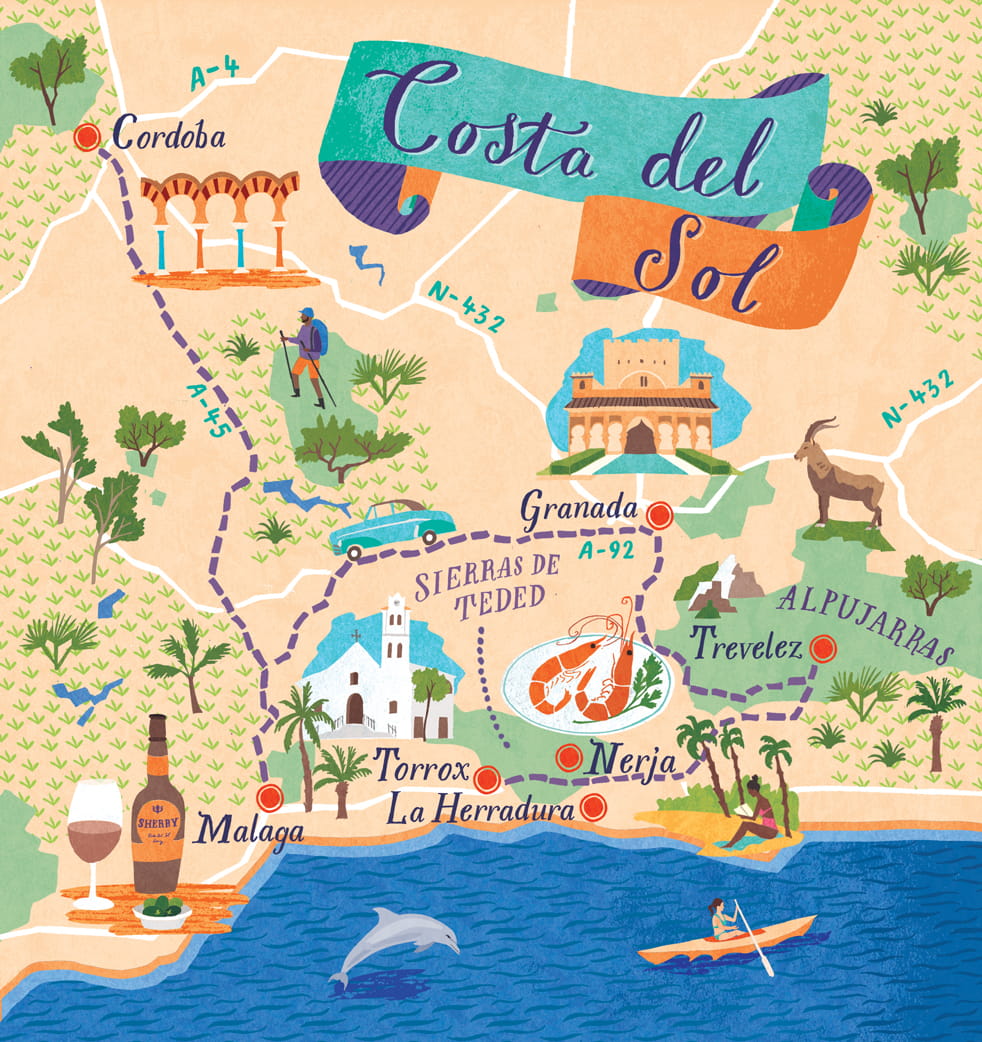
1. Beachside chilling in la Herradura
With a sheltered beach, this charming town is perfect for a few days of chilling by the beach – or launching into the many watersports on offer, if that’s more your scene.
2. Seafood platters in Nerja
On a Sunday, diners pack the outdoor tables at El Pulguilla for giant platters of delicious fish and seafood.

Fresh seafood is a staple of the Andalusian diet.
3. Hearty fare in the Alpujarras
The region’s famed jamón is produced at its best in the village of Trevélez, while hearty stews like puchero de hinojos (fennel stew) and potaje de habichuelas (green bean stew), and lighter soups such as ajo blanco (white garlic soup) and sopa de almendras (almond soup) can be found everywhere.
4. Must-see Granada
The spectacular mountainous backdrop alone makes this elevated city worth a visit and it is, of course, home to the Alhambra complex, which is an unmissable attraction – but there’s much more to see, too.
5. Málaga’s tapas
Join the other tourists at the vast El Pimpi for a sit-down meal, or stand in the beautiful Atarazanas Market to sup glasses of fish soup and scarf down tapas and pinchos of croquetas, fried fish, oysters, tortilla and more – most are less than €1.
6. Córdoba’s ancient Moorish sites
With Moorish sights to rival Granada’s, this ridiculously picturesque city includes a UNESCO World Heritage Site. Don’t miss the famous Mezquita (mosque) and pretty patios.
Córdoba: a day trip from Málaga
Two hours inland from Málaga, the Arab city of Córdoba is arguably as enticing a prospect as Granada when it comes to Moorish attractions. Its own version of the Alhambra, the Alcázar, is a joyous mix of gardens, fountains and shady walkways set picturesquely next to the Guadalquivir River. It has a stand-out mosque-turned-cathedral, La Mezquita, featuring exuberant candy stripe arches in its magical mix of Islamic and Christian architecture (climb the 177-feet-high bell tower, once a minaret, to see the layout and enjoy great views).
The well-preserved old city is a UNESCO World Heritage Site and, in the Roman bridge Puente Romano, it has one of the most beautiful bridges in Spain. Need we say more?
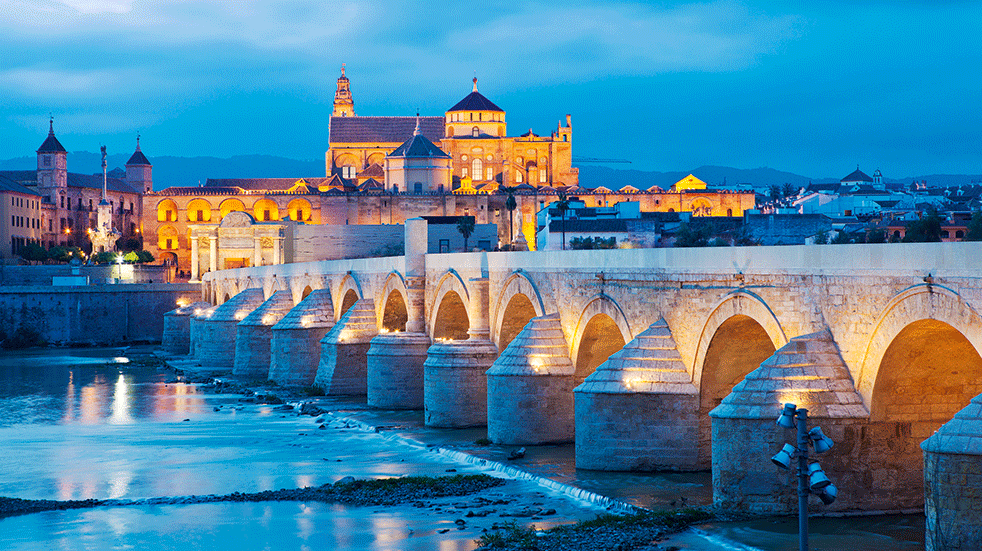
Córdoba's Roman bridge: the Puente Romano.
Exploring Andalusia: a tip from the locals
"At the top of Mairena there’s a wonderful spot where three eras of threshing circles have been restored to make an amazing lookout point."
Emma and David Illsley, Las Chimeneas, Mairena

How to explore Andalusia
All these destinations are easily covered on a circular road trip from Málaga, which has daily flights year-round from airports across Britain, as well as a wide range of car-hire companies.


